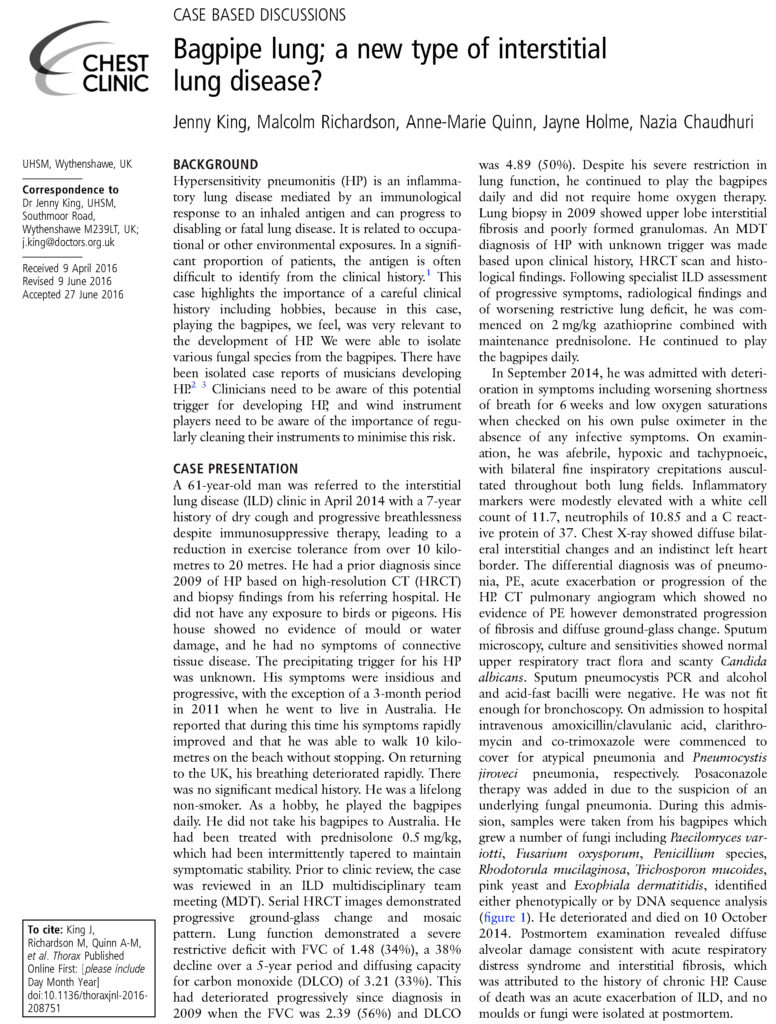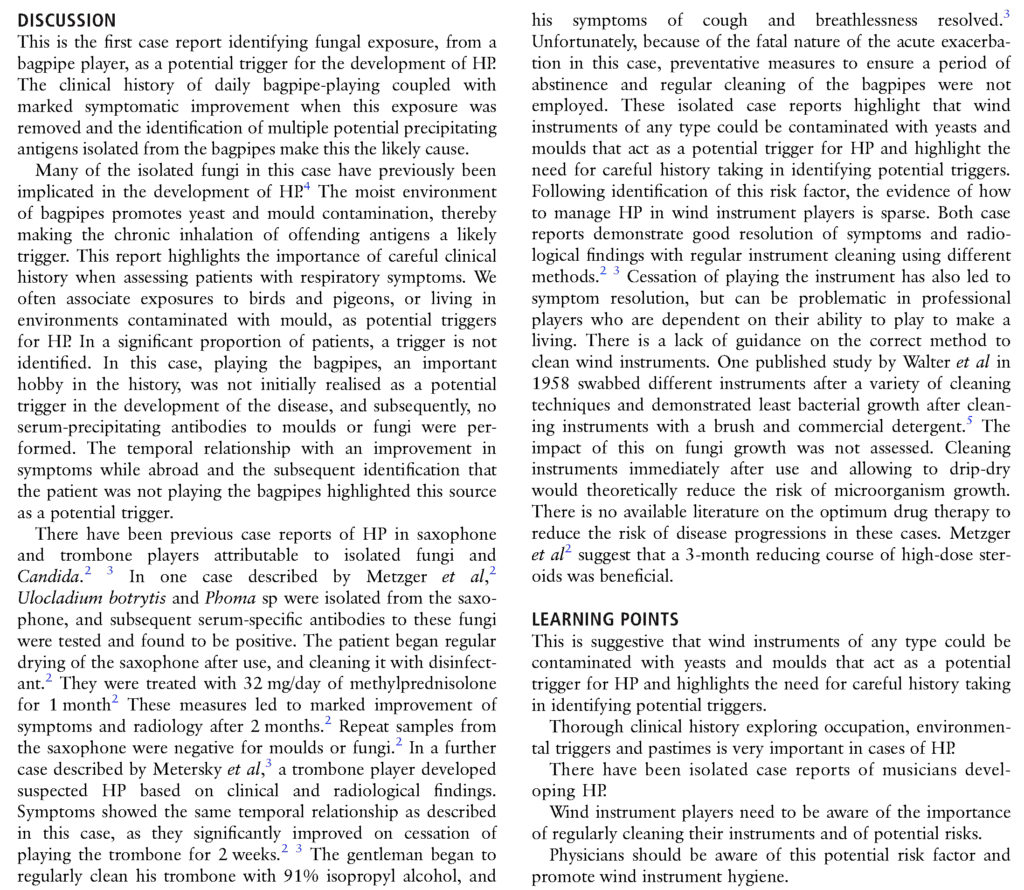There was much brouhaha in the national press a couple of weeks ago about the dangers to pipers from fungal spores and bacteria in their instruments. Today we publish the actual scientific findings on which these reports – some of them misleading – were based.
Although the article contains a lot of medical terminology (as one would expect), we believe it is worth a proper read so that pipers fully understand, as best we can, the serious nature of the research. The basic finding is that dirty instruments can harbour yeasts and moulds which can exacerbate or trigger lung disease.
The report tells us of a 61-year-old victim, who died in 2014, playing his pipes daily. He suffered from respiratory difficulties but when he went on holiday to Australia he did not take his instrument with him; his breathing improved significantly.
The article is accompanied by pictures of petri dishes containing the various cultures associated with the parts of the bagpipe which were examined.
Bag inflated then air sampled:
Chanter stock and neck of bag:
So the message is clear; keep all parts of your instrument (including reed protector) clean with regular washing with a mild disinfectant and warm, soapy water. Change your bag frequently if you play sheepskin or hide. Synthetic? give the bag a regular rinse out and allow to dry naturally. With these simple precautions we have nothing to worry about.
Bands have a duty of care for their members and should insist on cleanliness of instruments at all times. This may be particularly relevant where minors are concerned. If you are a piper who suffers from ‘chestiness’ it may be worthwhile following these bagpipe hygiene guidelines.
Here is the article in full followed by a PDF which some readers may wish to download for print out.
Click to access PDF: bagpipe lung – full article






















Hi. I spent quite a lot of time responding to the media about this and my main criticisms are firstly the apparent extreme rarity of the case, given the number of active pipers there are worldwide and secondly their methodology: no proven causal link and, more to the point, they did not apparently take samples from either the blowpipe or the valve!